Fisk Jubilee Singers
- Our History
- Notable Engagements
- Elmina Castle
- Commencement Concert
- Berklee School of Musical Celebration
- Walk of Fame
- In Bright Mansions
- Sacred Journey
UPCOMING PERFORMANCES

Next Performance : Friday, March 29, Oak Ridge, TN

Sacred Journey: CD / DVD
Sacred Journey, the remarkable live CD/DVD combo was recorded and filmed live at the 600 year old West African slave prison known as Elmina Castle in Cape Coast, Ghana in the Summer of 2007. The DVD juxtaposes the enchanting music of the Fisk Jubilee Singers with the haunting images of Elmina Castle.
It is the second release from Sunrise Music Group, a Nashville-based record label with a focus on Gospel, Jazz, and Classical music. Sunrise Music Group was formed in Nashville, Tennessee in May, 2007 as a culmination of the many projects brought to fruition by Sunrise Entertainment. The artist driven label will spotlight the best performers in black gospel music as well as classical and jazz performances. Remaining true to the Sunrise Entertainment trademark of innovative video and audio projects that highlight special events, Sunrise Music Group will produce a combination CD/DVD package for each project. The inaugural projects for Sunrise Music Group include Faith Unscripted: Dr. Bobby Jones, and Sacred Journey, featuring Fisk Jubilee Singers® .
Purchase Sacred Journey CD
Track List:
I Thank You Jesus Our Father Didn’t My Lord Kekeli Tso Kekeli Me We Shall Walk Though the Valley In Peace Here is On My Souls Been Anchored In The Lord An’ I Cry Mister Banjo Sweet Home Mawu Nye Lolo Ride The Chariot
Making of the DVD
One of the most exciting aspects of the “sacred journey” to Ghana was the Elmina Castle performance. Sunrise Music Group provided the crew and equipment for this recording project. Some of the challenges encountered by Producer Susan Bowman and Producer/Director Robert Swope included the sound from the crashing ocean waves. We were able to complete the project satisfactorily.
Scholarship Fund
The Fisk Jubilee Singers represent a group of young men and women who attend Fisk University and have made a commitment to continue the rich legacy, which was started in 1871. Financial support is needed in order to continue assisting these students as they prepare for their individual professional goals. The purchase of this CD/DVD combo will help generate funds for the scholarships.
The Fisk Jubilee Singers are an American a cappella ensemble that performs Negro spirituals originally sung by slaves prior to the Civil War.
Performances

- Health News
- Glenn Ellis
- Samuetta Drew
- Bham People
- Third Thursdays
- Love Stories
- Entertainment
- National Entertainment
- Bham Voices
- Hollis Wormsby
- Marc Morial
- Dr Jesse Lewis Sr
- Marian Wright Edelman
- Julianne Malveaux
- Wayne Curtis
- Reverend Jesse Jackson
- Local Sports
- State Sports
- National Sports
- Black History Month
- Magic City Classic
- Classified Ads
- Sign in / Join

- ♃ Recent Stories ☄
- People Profile
- Local Entertainment
12 of the Greatest Gospel Groups
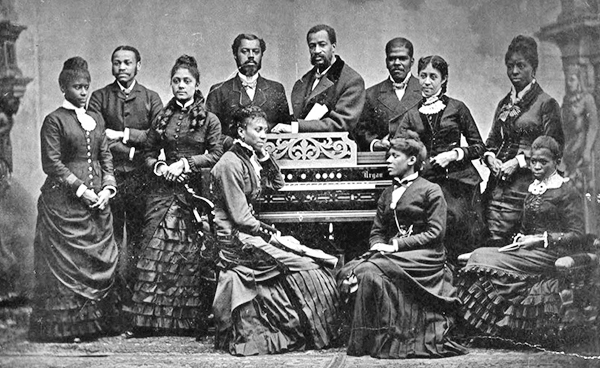
In honor of Black Music Month, the Birmingham Times is highlighting some of the great groups across several genres. The series began June 2, with soul groups and continues today with gospel groups. The lineup for the rest of the month:
- June 16: Hip-hop groups
- June 23: Jazz groups
Gospel music—with roots in the African-American religious experience and the black oral tradition—can be traced to the early 17th century. The repetition of the words allowed those who could not read the opportunity to participate in worship. During this time, hymns and sacred songs used the same call-and-response style from which Negro spirituals and work songs emerged.
Here are some of the groups that have left a lasting impact on the gospel-music genre.
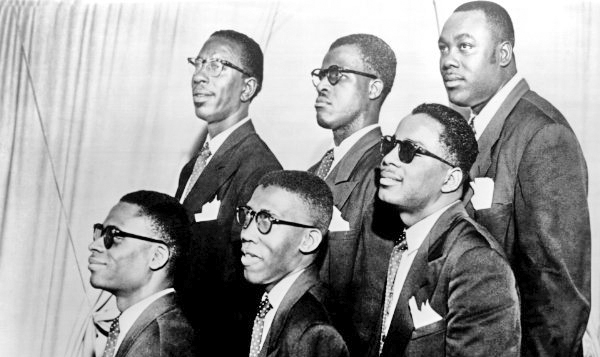
Five Blind Boys of Alabama (above)
It’s almost unbelievable that a group of blind, African-American singers—who started out touring during a time of whites-only bathrooms, restaurants, and hotels—would go on to win five Grammy awards and a Lifetime Achievement Grammy, as well as be inducted into the Gospel Music Hall of Fame and perform at the White House for three different presidents. Since the original members first sang together as kids at the Alabama Institute for the Negro Blind in the late 1930s, the band has persevered through seven decades to become one of the most recognized and decorated music groups in the world.

Fisk Jubilee Singers (above)
The original Jubilee Singers introduced so-called slave songs to the world in 1871, and they were instrumental in preserving the unique American musical tradition known today as Negro spirituals. They broke racial barriers in the United States and abroad, even entertaining kings and queens in Europe in the late 19th century. In July 2007, the Fisk Jubilee Singers went on a sacred journey to Ghana at the invitation of the U.S. Embassy. In 2008, the Fisk Jubilee Singers received the National Medal of Arts, the nation’s highest honor for artists and patrons of the arts. The award was presented by President George W. Bush and first lady Laura Bush during a ceremony at the White House.
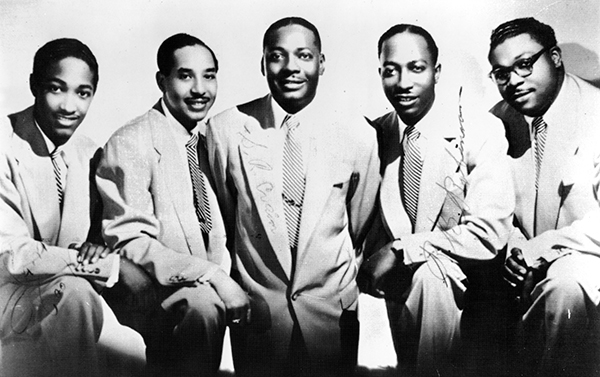
Soul Stirrers (above)
This group launched the career of legendary soul singer Sam Cooke—but they were much more than that. The Soul Stirrers set the pace for gospel and pop vocal groups and played a role as forefathers in the development of rhythm and blues. They also took gospel out of local churches and presented it to a national audience. The Soul Stirrers radically reshaped traditional gospel material and wrote many enduring songs of their own. The music of the Soul Stirrers represented a progression from jubilee singing to a more rhythmic style, and it served as the basis for doo-wop and R&B. The group attained peak popularity when Cooke, with his irresistible voice and magnetic personality, was part of the lineup.
The Caravans (above)
From the late-50s to the mid-60s, the Caravans went unrivaled as the nation’s most popular touring gospel group, earning acclaim as one of the greatest acts ever to arrive on the spiritual music front. The fluctuating roster would eventually include future superstars Shirley Caesar, Inez Andrews, Bessie Griffin, and the Rev. James Cleveland. The Caravans were formed in Chicago in 1952 by Albertina Walker, and from day one the lineup shifted regularly, with Walker as the mainstay. By the mid-50s, the Caravans were among the most popular acts in all of gospel music, with a lineup featuring the young soprano phenom Caesar and the shrieking contralto Andrews, which proved to be a powerhouse one-two punch.
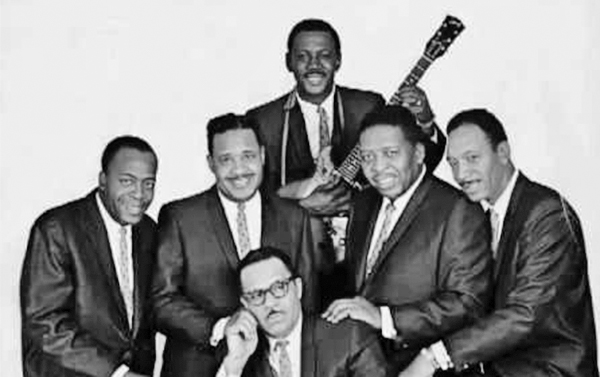
The Dixie Hummingbirds(above)
A pioneering force behind the evolution of the modern gospel quartet sound, the Dixie Hummingbirds were among the longest-lived and most successful groups of their era. Renowned for their imaginative arrangements, progressive harmonies, and all-around versatility, the group earned almost universal recognition as the greatest Southern quartet of their generation. Formed in Greenville, S.C., the Dixie Hummingbirds began their career during the late-30s as a jubilee-style act. Their lasting appeal was evident decades later when in 1973 the group backed Paul Simon on his pop smash “Loves Me Like a Rock.” In 1978, Ebony magazine named them the World’s Greatest Gospel Group.
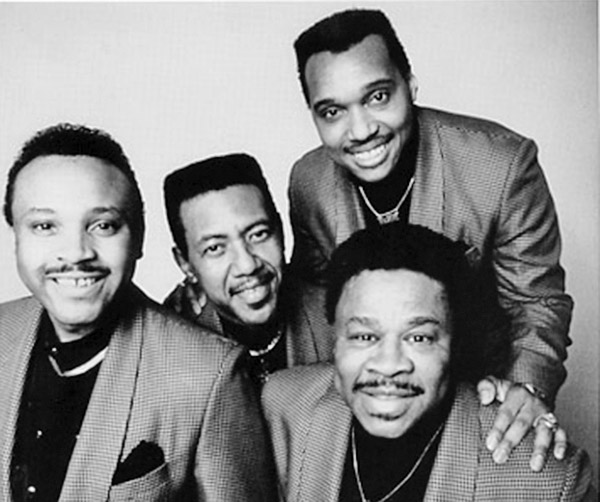
The Mighty Clouds of Joy (above)
The founder of this group, Willie Joe Ligon, was born in Troy, Ala. They were one of the first gospel groups to incorporate R&B techniques, such as drums and stylized choreography. Known as the “Temptations of Gospel,” the Mighty Clouds of Joy, like the Motown group, exhibit a sophisticated masculine style. Along with preaching, the Mighty Clouds of Joy put other innovations into their dramatic stage shows. Sporting bright, color-coordinated suits and pompadour haircuts, the group would whip audiences into a frenzy with moral tales exhorting the people to strengthen their faith. Their exuberant inventiveness alienated some conservative gospel listeners, but the group believed that through the commercial market they could reach a whole new audience—especially young people in the ’hood, who they felt needed to hear gospel’s message. The group recorded more than 30 albums in their 40 years of gospel.
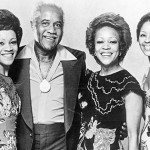
The Staple Singers (above)
One of the greatest R&B groups of all time or one of the greatest gospel groups? We say both. Last week, the Staple Singers appeared on our 12 of the Greatest Soul Groups list—and they’re back again this week. There has to be a place on our list for a group called “God’s greatest hit-makers.” In regards to their crossover from pure gospel to folk and soul-flavored material, a source of controversy within the religious community, patriarch Roebuck “Pops” Staples told Essence magazine: “We’ve always tried to make affirmative, happy music that makes a positive point. Our aim is to get across a message while we’re entertaining people.”
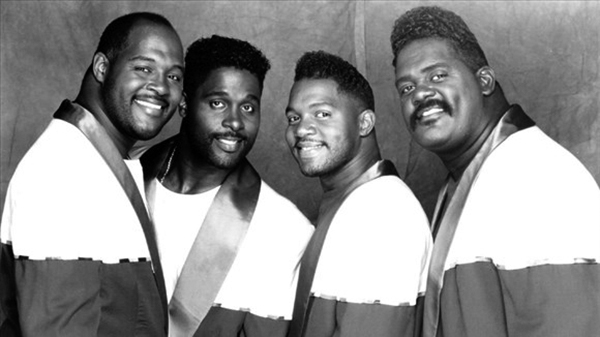
The Winans (above)
The Winans—brothers Marvin, Carvin, Ronald, and Michael—were four of 10 children born to David “Pops” and Delores “Mom” Winans in Detroit, Mich. The brothers, raised with their siblings in a strict, loving Christian environment, grew up singing in gospel choirs and eventually decided to form a professional quartet. The Winans were pioneers in the field of contemporary gospel, updating the sound and style of traditional black gospel vocal groups for the urban contemporary age. For the Winans, performing was a family affair: Their parents recorded together as Mom & Pop Winans, and other spinoff acts included Daniel Winans and Vickie Winans, as well as brother and sister BeBe & CeCe and the youngest siblings, Angie & Debbie. Even the third generation got into the act with the Winans Phase 2, sons of the original group members.
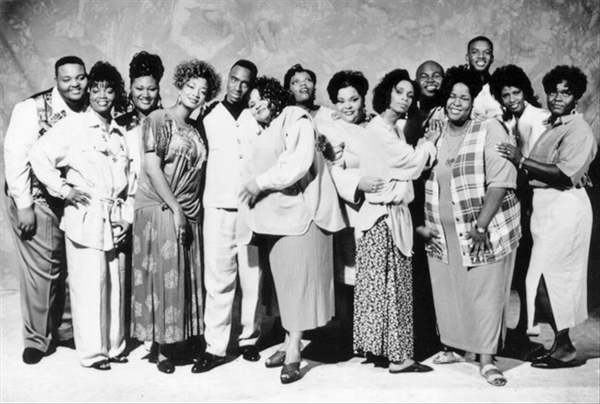
Kirk Franklin and the Family (above)
Kirk Franklin fronted three groups—the Family, God’s Property, and the One Nation Crew—before going solo, but his work with the Family (1992–2000) landed him on this list. In 1993, the group released its debut album, “Kirk Franklin & the Family,” which spent almost two years on the gospel music charts, charted on the R&B charts, and eventually earned platinum sales status. It remained at number one on the Billboard Top Gospel Albums chart for 42 weeks and was the first gospel music album to sell more than a million units. Franklin also had success with his other groups, including God’s Property, which performed the crossover hit “Stomp,” featuring Cheryl “Salt” James of the hip-hop group Salt-N-Pepa.

The Clark Sisters (above)
The Clark Sisters—Jacky Clark Chisholm, Elbernita “Twinkie” Clark-Terrell, Dorinda Clark-Cole, and Karen Clark Sheard—are daughters of legendary gospel musician and choral director Dr. Mattie Moss Clark. They are credited for bringing gospel music to the mainstream and considered pioneers of contemporary gospel. Their biggest crossover hits include “Is My Living in Vain?” “Hallelujah,” “He Gave Me Nothing to Lose,” “Endow Me,” “Jesus Is a Love Song,” “Pure Gold,” “Expect a Miracle,” and, of course, the crossover, gold-certified “You Brought the Sunshine.” With 16 albums to their credit and millions in sales, the Clark Sisters are the highest-selling female gospel group in history.
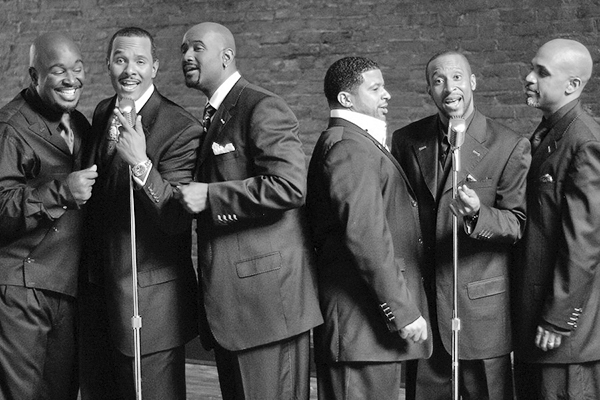
Take 6 (above)
The most Grammy-nominated group in gospel history got its start at Oakwood College (now Oakwood University), a Seventh-Day Adventist university in Huntsville, Ala. In 1980, when Claude McKnight (older brother of R&B musician Brian McKnight) was a freshman, he formed an a cappella quartet named Alliance; the group changed its name to Take 6 after a search revealed that the original name was already in use. Take 6 has performed on Saturday Night Live, at the Oscars and the Grammys—and for four sitting U.S. presidents.
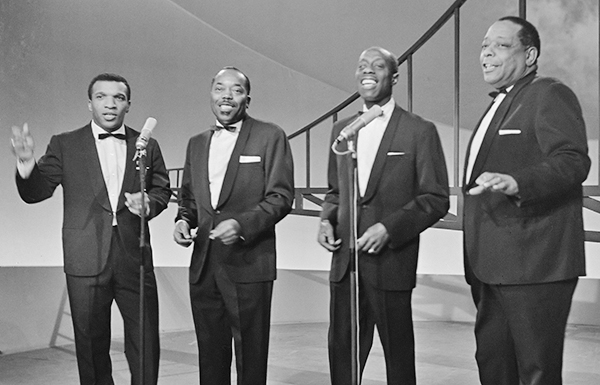
Golden Gate Quartet (above)
Speaking of presidents, the Golden Gate Quartet sang at President Franklin Delano Roosevelt’s 1941 inauguration, becoming the first black musical group to sing at Constitution Hall. They would go on to later perform several times at the White House. The group was founded as the Golden Gate Jubilee Singers in 1934 by four students at the Booker T. Washington College in Norfolk, Va. They began as a traditional jubilee quartet, combining the clever arrangements associated with barbershop quartets with rhythms borrowed from the blues and jazz-like scat singing. The quartet lost its pre-eminent position in gospel music after World War II, when they faced competition from newer hard gospel quartets, such as the Dixie Hummingbirds and the Soul Stirrers, both of whom are on this list. (Photo credit from Archives/Getty Images)
Sources: Blindboys.com, rockhall.com, Allmusic.com, Encyclopedia.com, Fiskjubileesingers.org, fisk.edu, en.wikipedia.org
Share this:
Related articles more from author.
Louis Gossett Jr., First Black Man to Win Supporting Actor Oscar, Dies at 87
Alabama HBCUs Ready to Welcome Birmingham-Southern College Students
Birmingham to Expand Youth Violence Prevention Program with Nearly $2 Million Federal Grant
Leave a reply cancel reply.
Save my name, email, and website in this browser for the next time I comment.
Notify me of follow-up comments by email.
Notify me of new posts by email.

Next Journey Quartet
Copyright © 2024 Next Journey Quartet - All Rights Reserved.
Powered by GoDaddy
This website uses cookies.
We use cookies to analyze website traffic and optimize your website experience. By accepting our use of cookies, your data will be aggregated with all other user data.
THE SACRED GOSPEL
The Full Story
Welcome to The Sacred Gospel
At The Sacred Gospel, we are passionate advocates for the magic of live music. We understand the unique energy, raw emotion, and transformative power that live performances bring to both artists and audiences. Our mission is to capture these extraordinary moments and share them with the world. We believe that every note, every beat, and every melody deserves to be heard and appreciated.

Our vision is simple yet profound: to bridge the gap between artists and their fans, regardless of geographical boundaries. We envision a world where music knows no limits, where people from diverse cultures and backgrounds can connect through the universal language of melodies and harmonies. By making live performances accessible to everyone, we aim to enrich lives and inspire a global community bound together by their love for music.
At The Sacred Gospel, we focus on recording live performances and sharing them with a broad audience. We use advanced technology and a team of experts to keep the real feel of each live show, whether it's a cozy acoustic performance or an exciting stadium concert. Our top-notch recordings and well-edited videos let music fans enjoy their beloved concerts again and find new artists right from home.

Our Commitment
We are committed to promoting both established artists and emerging talents. By showcasing a diverse range of musical genres and styles, we celebrate the richness of the global music scene. We also work closely with artists, promoters, and venues to ensure that their creative expressions are presented in the best possible way, reaching fans who might not have the opportunity to attend live events in person.

Join Our Community
When you support The Sacred Gospel, you play a vital role in our goal to help artists grow and share music with people everywhere. You're welcome to join us in celebrating live music, where songs go beyond borders and differences, creating a beautiful mix of cultures that makes the world richer. We're glad you visited The Sacred Gospel, and it's the start of a unique musical journey with endless creativity and an open-hearted audience. We're very thankful for your presence, and we're excited to share this musical adventure with you.

- The Ignatian Way
- Ignatian Organizations
- Jesuit Organizations
- Education, Arts and Sciences
- Social Justice
- Theology and Ecclesiology
- The Spiritual Exercises
- The Daily Examen
- Prayers by St. Ignatius and Others
- Prayer Online
- The What-How-Why of Prayer
- An Approach to Good Choices
- Spiritual Direction
- Discernment of Spirits
- St. Ignatius Loyola
- 16th- and 17th-Century Ignatian Voices
- 18th- and 19th-Century Ignatian Voices
- 20th-Century Ignatian Voices
- Discernment
- Reflections
- Spiritual Exercises

Assuming Failure
Accompaniment and compassion, on retreat with pope francis: a webinar with austen ivereigh, jesus meets his mother on the way to the crucifixion, advent resources.

Ignatian contemplation and reflective prayer encourage us in the season of Advent. Below we highlight Advent resources in the tradition of Ignatian spirituality.
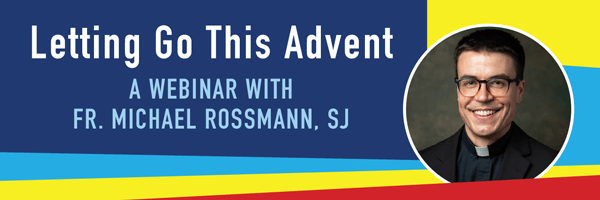
Arts & Faith: Advent

First Week of Advent, Cycle B Second Week of Advent, Cycle B Third Week of Advent, Cycle B Fourth Week of Advent, Cycle B Christmas Day
First Week of Advent, Cycle C Second Week of Advent, Cycle C Third Week of Advent, Cycle C Fourth Week of Advent, Cycle C Christmas Day
First Week of Advent, Cycle A Second Week of Advent, Cycle A Third Week of Advent, Cycle A Fourth Week of Advent, Cycle A Christmas Day
Advent Weekly Video Reflections

Week One: Love Is Coming by Joe Paprocki Week Two: Waiting by Tim Muldoon Week Three: How Does Hope Shape Us? by Vinita Hampton Wright Week Four: Mary Receiving Jesus into Her Arms by Becky Eldredge
More Advent Resources

Loyola Press Online Advent Calendar Use an online Advent calendar featuring daily reflections from several sites. Also find other Advent resources from Loyola Press.
Journeying with the Magi Popular prayer sites Sacred Space and Pray as You Go collaborate to offer this online retreat that reflects upon the Christmas story of the Magi (or Wise Men) from St. Matthew’s Gospel.
Advent Podcasts The New England Jesuits offer meditations and reflections intersecting themes of Advent and Ignatian spirituality. The topics are: Anticipating Joy, Using the Examen During Advent, Imaginative Prayer, and Advent Gifts and Graces.
Praying Advent Creighton University’s Online Ministries offers a selection of materials to help people prayerfully enter into Advent, from short prayers to longer reflections and audio retreats.
Advent Examen By Laurie Marshanke Marshanke invites seasonal reflection through the lens of the Examen.
Contemplation on the Incarnation Part One: The Trinity Looks Down from Heaven By Daniel Ruff, SJ The Contemplation on the Incarnation begins with imagining the Trinity looking down from heaven and responding with the Incarnation. Ruff introduces readers to this aspect of the Spiritual Exercises.
Contemplation on the Incarnation Part Two: Mary’s Human Response By Daniel Ruff, SJ The second part of the Contemplation on the Incarnation explores the Annunciation and Mary’s response.
Mary at Her Annunciation as a Model for Growing in the Virtue of Faith By Gerald M. Fagin, SJ In contemplating the Annunciation, we see Mary as a model of faith and are called to trust and openness ourselves.
Find more Advent reflections on the dotMagis blog.
DOTMAGIS BLOGGERS

Praying Through Suffering
The anima christi during holy week, the ignatian workout for lent retreat: holy week, help my hurting heart, praying on the passion and death of jesus.
Filter by Genres
- Arts & Culture
- Current Affairs
- Factual Series
- Foreign Language
- Human Interest
- Natural History
- Social Issues
Filter By Popular Keywords
- Natural Disasters

Sacred Journeys 6x60
Sacred journeys are as old as humanity, yet they’re more popular today than ever before. Tens of millions go on a pilgrimage each year. In this landmark series, New York Times best-selling author Bruce Feiler travels with American pilgrims on six historic pilgrimages. They set out from the ordinary and seek the extraordinary.
– In Lourdes, France, bathe in sacred waters with wounded soldiers from around the world in a moving search for healing and reconciliation.
– In southern Japan, trek with Buddhist pilgrims on an 800-mile, 88-temple journey as they seek personal salvation and renewal.
– In Jerusalem, follow the trail of pilgrims from the three Abrahamic traditions as they ground their faith in one of the holiest cities on Earth.
– In Mecca, go behind closed doors of the Hajj in a rare, intimate look at pilgrims making the trip of a lifetime.
– In India, plunge into the Ganges during the largest human gathering on earth, the Kumbh Mela, which takes place every 12 years.
– And in Nigeria, dance at water’s edge with African-Americans at a spectacular Yoruba festival where they reclaim their religious roots.
Unprecedented in scope, Sacred Journeys with Bruce Feiler will forever change how you view your own spiritual journey.
- Download Fact Sheet
Related Videos
Baby animals: the top 10, season two, israel’s second front.

#header_text h1#site_heading a, #header_text h1#site_heading{ font-style:normal;color:#ffffff;font-family:Oswald;font-weight:400;line-height:1.5;text-shadow:rgba(0, 0, 0, 0.72) 6px 6px 10px } @media (min-width: 650px) { #header_text h1#site_heading a, #header_text h1#site_heading{ letter-spacing:-0.7px;font-size:84px } } Sacred Call Ministries
#header_text h2#site_subheading a, #header_text h2#site_subheading{ font-style:normal;color:#000000;font-family:'ubuntu condensed';font-weight:700;line-height:1.2;text-shadow:rgba(255, 255, 255, 0.8) 2px 2px 32px } @media (min-width: 650px) { #header_text h2#site_subheading a, #header_text h2#site_subheading{ letter-spacing:1.1px;font-size:30px } }.
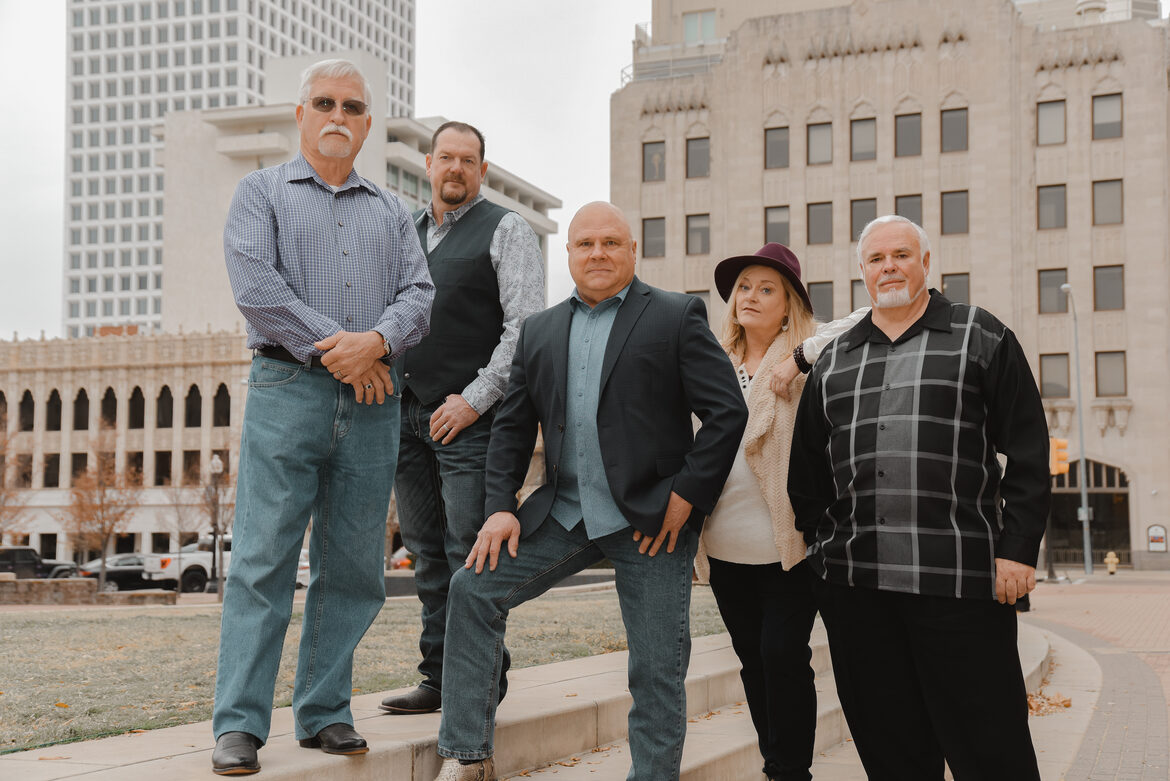
Sacred Call is a mixed Southern Gospel Quartet based out of Claremore, Oklahoma. Although the current iteration of singers is new, the individual and collective experience of its members is extensive. As a ministry, Sacred Call is committed to preserving the rich heritage of Southern Gospel Music and sharing the Good News of Jesus Christ through a mix of classic, southern, country and slightly newer gospel music songs. The group claims 1 Peter 2:9 as their foundation and purpose. Each member of the group has been “called out” of darkness into the marvelous light and life of salvation through Jesus Christ, our Lord. You will be blessed by their singing, but more importantly, you will be encouraged, uplifted and challenged by their message in song and testimony.
Click on each of the pictures below to learn a little more about each one of our members!
© 2023 Sacred Call Music. Website development by HeavenSound , a division of GraceChord LLC .
- Home
- / Our doctrine
- / Principles of National Restoration
- / Holy Russia
- / Vladimir Soloviev, prophet of Russia's conversion
VLADIMIR SOLOVIEV prophet of Russia’s conversion
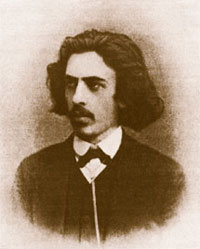
T HE conversion of Russia will not be the work of man, no matter how gifted he may be, but that of the Immaculate Heart of the Virgin Mary, the Mediatrix of all graces, because this is God’s wish, which he revealed to the world in 1917. The life and works of Vladimir Soloviev are a perfect illustration of this truth of Fatima. He whom our Father regards as « the greatest Russian genius of the 19th century », was in his own way a prophet of the “ conversion ” of his beloved Country, announcing the necessity of her returning to the bosom of the Roman Church. « Rome or chaos », such was his catchphrase, Rome whose anagram is not a matter of chance, but a providential sign, a definition: ROMA , AMOR . Led by this incomparable guide, we would like « to anticipate in our thoughts, our hearts and our prayers this consecration, this long-awaited conversion, which must mark the beginning of a time of sacred peace throughout the world, the beginning of the universal reign of the Most Blessed and Immaculate Heart of Mary, and through Her, of God’s Kingdom » (English CRC, December 1982, p. 23).
A PERSONAL CONVERSION
Through the example of his life, Soloviev recalls the indispensable means of this immense work: self-renunciation, personal and collective sacrifice, in Russian the podwig , the only way in which the Church, nations, saints and heroes can become the instruments of God’s designs. If he managed to surpass his master Dostoyevsky by his « truly universal Catholicism and far superior mystical vision », this was not without without a conversion of mind and heart on his part.
Our Father summarises the principal stages of his life as follows: « Born of an honourable Muscovite family, of part Kievian ancestry, Vladimir Soloviev began, in a world where only Germany counted, by being a victim of all the poisons of the West. He himself relates how he was a zealous materialist at the age of thirteen, had read Renan’s Life of Jesus at fifteen, and had become an evolutionist and therefore (!) an atheist and a nihilist at eighteen, in « It was Spinoza and then Schopenhauer who pulled him out of this bottomless void. Whereupon in 1872 a mysterious encounter with “ Wisdom ” suddenly shook him out of the scientific naturalism in which he had been vegetating and made him aware, as he says, of invisible Beauty, the “ Sophia tou théou ”, the daughter of God. He thus became the fervent witness of Wisdom’s indwelling in the world and of Her desire for total incarnation and universal queenship. His quest for wisdom, scientific, aesthetic and mystical, had commenced. He was nineteen years old. The quest would never end for this new style Russian pilgrim ; it would be of an unparalleled fruitfulness despite its touching brevity. He died of exhaustion in 1900, at the age ! » (English CRC, December 1982, p. 35)
We will limit ourselves in this article to his prophetic insights on the Union of the Churches. In his Lessons on Theandry (1878) – he was then twenty-five ! – our philosopher applies himself to contemplating the Wisdom of God at work in history, perfectly incarnated in Jesus and His virginal Mother, as well as in the Church as she awaits her eschatological transfiguration. The most serious sin, throughout this history, has been that of schism. Who is responsible for this vast Vladimir Soloviev began by throwing all responsibility for it on the Catholic Church, so much so that he provided the inspiration for Dostoyevsky’s famous “ myth of the Grand Inquisitor ” in The Brothers Karamazov . But, at the beginning of the 1880’s, through studying the question more closely, he understood that the sin of schism was in fact that of the East. This was a stroke of genius on his part for which our Father commends him greatly:
« I must beg pardon of my master Msgr. Jean Rupp, of Solzhenitsyn, Volkoff and so many others, but it seems obvious to to me, as it did to Soloviev in the end, that the schism of Moscow in setting itself up as the third Rome was the beginning of all the ills suffered by these admirable Christian peoples of European Russia . And I must say so because this rupture still weighs heavily on the world of today and because it is precisely of this rupture that Our Lady of Fatima speaks when She foretells “ the conversion of Russia ”. (English CRC, December 1982, p. 24)
Let us follow Soloviev in his commendable mystical conversion which has opened up a path of light for his people, allowing a spring of grace and mercy to gush forth.
AN EVANGELICAL DISCOURSE
In 1881, Soloviev published a long article, still very antipapist, entitled Spiritual power in Russia . There the pope was presented as Antichrist institutionalised ! Our theorist placed all his hope in the regenerative mission of Holy Russia and in the Tsar who was to be her « divine figure, religious guide and animating wisdom ». But were the Russian people still capable of accomplishing such One particular event was to shake Soloviev’s patriotic faith. On March 1, 1881, Alexander II was assassinated by revolutionaries. A few days later, Soloviev gave a Discourse in which he recommended that his successor, Alexander III, show mercy to the regicides. Certainly not as a matter of weakness or abdication before the Revolution, even less out of the spirit of non-violence that a certain Tolstoy was already preaching, but « as an example of Russian piety », that famous podwig « which lies at the heart of the Russian people’s evangelical soul, of which the tsar is the living icon ». Alas, Soloviev was not understood... This was a painful stage in his life, the first step he had taken beyond his master Dostoyevsky.
The following year, he published another article entitled “ Schism in the Russian people and society ”. Delving deep into the past, he accused Metropolitan Nikon of having broken, at the time of Peter the Great, the communion, the Sobornost , so beloved of the Russian people, by excommunicating Raskol, the fierce guardian of traditional popular religion... Ever since then, the Orthodox hierarchy, enslaved to the imperial power, had proved powerless to govern and sanctify Orthodoxy. It was nothing now but a shrunken, secularized “ local Church ” which, if it were to be restored and revived, would need to open itself up to “ the universal Church ”.
In the spring of 1882, Soloviev was powerfully affected by an unusual dream. In his dream he met a high-ranking Catholic ecclesiastic and entreated him to give him his blessing. The priest refused, so Soloviev insisted, declaring, « The separation of the Churches is the most disastrous thing possible. » Finally, the ecclesiastic agreed to give him his blessing.
This premonitory dream was to awaken in Vladimir Soloviev a burning desire for reconciliation with Catholicism, and to stimulate him to write a series of articles to be published every month in his friend Aksakov’s slavophile newspaper Rouss and then to be collected together in a work with the resonant title: The Great Controversy and Christian Politics . One particular maxim constantly reappeared under the Russian writer’s pen:
« FIRST AND FOREMOST WE MUST WORK TO RESTORE THE UNITY OF THE CHURCH, AND TO MAKE THE FIRE OF LOVE BURN IN THE HEART OF CHRIST’S SPOUSE . »
By an irony of fate, the term “ Controversy ”, which for Soloviev referred to the conflict between Rome and the East, was going to give place to a bitter controversy between himself and his Orthodox and slavophile friends.
A MARVELLOUS AND ADORABLE WISDOM
T HE world’s beauty appeared to Soloviev as a living figure, a real existence, changing and yet immortal. He saw her and held her as the queen of his spiritual universe under her venerable name of Sancta Sophia . At the end of his life, in 1898, he celebrated the Three Encounters he had had with this Beauty which for him was Wisdom.
“ Three times in his life he had been overwhelmed by the radiant visit of Wisdom who appeared to him in the form of an absolutely heavenly female being, dazzling him and enlightening him profoundly. Not without reason certain authors think that all his religious and even philosophical works derive from this illumination. ”
And let us immediately point out, in order to acclimatize the Western reader who is highly likely to be disconcerted by these accounts, that trustworthy interpreters of Soloviev have attributed a marian character to these visions. For them, the whole of the Philosopher’s work derives from the AVE MARIA GRATIA PLENA . “ It is a marvellous perspective ”, adds Msgr. Rupp. “ Wisdom is closely allied to the Immaculate who is its seat. ” ( Le message ecclésial de Soloviev , p. 340)...
What I am going to say next will perhaps surprise my reader. Nothing is more biblical than this vision, and I am astonished at the astonishment of theologians and their impatient criticisms. This Sophia was already well known, hymned and even boldly adored by the scribes of the Old Testament under this very name of Wisdom. Far from being “ pantheist ”, this idea, this vision touches the essence of created beings, and is clearly poles apart from the Platonic idea and far more profound than Aristotle’s substance; it lies at the very heart of being, there where nothing exists except relationship to God, the term of a will and a wisdom that are infinite, there where exists a pure reflection, a fragment of the image of God’s beauty.
George de Nantes , A mysticism for our time , French CRC no. 133, p. 7.
THE GREAT CONTROVERSY

In January 1883, he fired the opening shots with an open letter to Aksakov: « As I reflected on the means of curing this interior disease (of Christianity), I became convinced that the origin of all these evils lies in the general weakening of the earthly organisation of the visible Church, following her division into two disunited parts. » He demonstrated that, in order to establish herself on earth and to endure throughout history, the Christian religion had need of a higher authority, and he explained that it was therefore essential to restore « the union of all Christian and ecclesiastical forces under the standard and under the power of one central ecclesiastical authority ».
On February 19, Soloviev gave a talk in homage to his master Dostoyevsky. It was almost a panegyric of the Roman Church ! He declared his ardent hope for the reconciliation of the two Churches, for the two parts of the universal Church which should never have been separated and whose centre lay in... Rome . As a result of this speech, he saw himself banned from speaking in public. The newspapers made no mention of his speech. For the first time, and it would not be the last, Soloviev was the victim of the censure of Constantin Petrowitch Pobiedonostev, Russia’s Grand Inquisitor and the Tsar’s adviser on religious matters. Pobiedonostev championed a sacral conception of political power, akin to that of the French legitimists of the time, but he was fiercely Orthodox, and any opening towards the Catholic religion was pitilessly censured.
Soloviev responded to this censure with a smile. So his speech had been described as « infantile chattering » ? « If we are not converted », he said to his friends, « and become like little children again, we will not enter the Kingdom of Heaven. » He went on: « When I was a pretentious little boy [teaching German philosophy: Kant, Hegel, Fichte, Schopenhauer and Nietzsche], people listened with great respect to my “ truly infantile ” prattling. And now it is fitting that the only way I can attain the perfection of humility is by everyone ! »
At the same time, he wrote to Aksakov: « It is necessary to defend Catholicism against the false accusations being brought against it... Consequently, in advocating a reconciliation with Catholicism, I assume that Catholicism is not in principle erroneous, for one cannot be reconciled with error . » Now there we have a true ecumenism ! The life of Soloviev, writes our Father, « was ».
To the charge of “ papism ” levelled against him, Soloviev responded in March 1883 with an admirable profession of faith, already Catholic:
« It seems to to me that you concentrate only on “ papism ” whereas I focus first and foremost on the great, holy and eternal Rome, a fundamental and integral part of the universal Church. I believe in this Rome, I bow before it, I love it with all my heart, and with all the strength of my soul I desire its rehabilitation for the unity and integrality of the universal Church. And may I be accursed as a parricide should I ever utter one word of condemnation against the Holy Church of Rome . »
THE REALISATION OF THE DREAM
In May 1883, on the occasion of the coronation of the Emperor Alexander III, the Moscow press complained that too many concessions were being made to restore diplomatic relations with the Vatican broken in 1866, but Soloviev protested: such an agreement was necessary, were it only to improve relations with the Catholics of Poland. The Pope was represented at the ceremony by his special envoy Msgr. Vincenzo Vanutelli. Had not Alexander III written to Leo XIII shortly beforehand: « Never has unity between all Churches and all States been so necessary, in order to realise the wish expressed by Your Holiness of seeing the peoples abandoning the disastrous errors responsible for the social malaise and returning to the holy laws of the Gospel... »
A few days after the ceremony, Soloviev was crossing Moscow in a hired car. Suddenly, he recognized the route he had followed in his dream the previous year. Soon he came to a stop in front of a house from which a Catholic prelate was just leaving: it was Msgr. Vanutelli in person... There was the same hesitation of this latter to give his blessing to a schismatic, and the same entreaties of Soloviev, who finally !
In the summer of 1883, our author wrote two articles on The Catholic Question . According to Soloviev, it was for Russia to take the first step towards the Catholic Church. Imagine !
His articles were not of the sort to leave his readers indifferent. On the Orthodox side, there was an increasing irritation, while on the Catholic side, surprise soon gave way to enthusiasm. The news crossed the borders, spreading to Poland and even to Croatia, where Msgr. Strossmayer was finally seeing his desires realised. The jurisdiction of his diocese of Djakovo extended into Bosnia and Serbia, that is into Orthodox territory. Endowed with a superior intelligence and animated by great apostolic zeal, this Croatian bishop keenly felt the need for a true, intelligent and benevolent ecumenism. He wrote in 1883 to one of his friends, Father Martynov:
« In my opinion, the principal task of the Catholic Church and of the Holy See this century is to draw as closely as possible to the Slav nation, principally the Russian nation . By winning it over to the divine unity of the Catholic Church, we would at the same time win over everyone in the world who still possess a positive faith. »
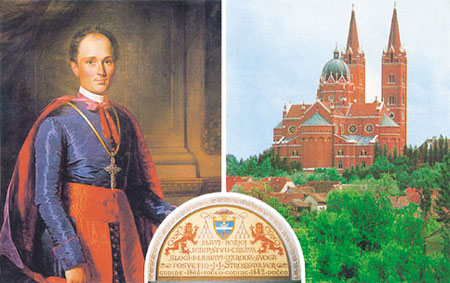
IN THE RADIANCE OF THE IMMACULATE
In the summer of 1883, Soloviev wrote five long letters to a Russian Uniate priest on the subject of The Immaculate Conception of the Most Blessed Virgin Mary . At the same time he translated Petrarch’s “ Praise and prayer to the Most Blessed Virgin ”, wherein he contemplated Her “ clothed in the Sun, crowned with stars... Her glance radiating infinity ! ” It is highly significant that Soloviev was simultaneously attracted by the mystery of the Catholic Church and the mystery of the Immaculate Virgin. The dogma of the Immaculate Conception was the first Catholic dogma which he embraced, and his favourite painting was the Immaculate Conception by Murillo.
In The Foundations of the Spiritual Life (1884), he exalted the « All Holy and Immaculate » Virgin Mary. In Russia and the Church Universal (1889), he would praise Pope Pius IX for having quoted, in support of his dogmatic definition, the Old Testament texts referring to Wisdom, the “ Sophia ” of his personal intuitions:
« If, by the substantial Wisdom of God, we were exclusively meant to understand the Person of Jesus Christ, how could we apply to the Blessed Virgin all those texts in the Wisdom books which speak of this Wisdom ? However, this application, which has existed from the very earliest times in the offices of both the Latin and Greek Churches, has today received doctrinal confirmation in the bull of Pius IX on the Immaculate Conception of the Most Blessed Virgin. » (quoted by Msgr. Rupp, Le message ecclésial de Soloviev, p. 338)
In September 1883, when the sixth chapter of The Great Controversy was published, a rumour spread through Moscow that Soloviev had “ passed over ” to Catholicism, but there was no truth in it. Moreover, curious though this may seem to us, he was not looking “ to pass over to Catholicism ”, but only to open Orthodoxy up to the universality of the Roman Church.
His seventh and final chapter aroused a lively debate, one that is ever topical. The question turned on the attitude of the Byzantine Greeks in conflict with the Crusaders of the West. Soloviev wrote: « On the day that Constantinople fell, seeing the Turkish armies poised to attack, the final spontaneously expressed cry of the Greeks was, “ Better Islamic slavery than any agreement with the Latins. ” I do not mention this as a reproach to the unfortunate Greeks. If, in this cry of implacable hatred, there was nothing Christian, then neither has there been anything especially Christian in all the formal and artificial attempts to reunite the Churches… »
Aksakov, his Orthodox pride deeply irritated by this remark, retorted: « What does he mean, nothing Christian ? May the Greeks be blessed a hundred times over for having preferred a foreign yoke and bodily torture to the abandonment of the purity of their faith in Christ and for having thus preserved us from the distortions of papism at the precise moment [ the beginning of the 13th century ! ] when it had reached the height of its deformity. May they win eternal glory for this ! »
Nonetheless, Soloviev continued his search for truth, surmounting every obstacle. His article “ Nine Questions to Father Ivantsov-Platonov ” published in December 1883, created a deep stir even in the West. Here he put nine questions to his former master in Orthodoxy on those points of controversy which set the Church of the East against the Church of Rome. Here is the setting:
« How is it that the countries of the East are separated from the Roman Church ? Did the latter proclaim an heretical proposition ? One would be hard pushed to maintain this, for the addition of the Filioque to the Creed, which is put forward to justify the separation, does not have the character of a heresy. Furthermore, it is absurd to say that the Roman Church is in a state of schism with regard to the Eastern Churches. Thus, the latter’s separation from the former has no basis. Let us acknowledge this and, putting aside all human viewpoints, let us work towards Unity or rather let us work so that Unity, which already has a virtual existence, may become a reality. »
THE THREAD OF AN ANCIENT TRADITION
During 1884, the Russian philosopher studied Catholic dogmatics. He read the works of Perrone, the theologian of Gregory XVI and Pius IX, as well as the texts of the Councils. He was particularly interested in Popes Gregory VII and Innocent III, whom he read in the original text.
At the same time he had a great enthusiasm for the Croatian priest George Krijanich who « had come from Zagreb to Moscow in the 17th century to spread the ideal of the Holy Kingdom of God, Roman Catholic and panslavic, gathering together under the sceptre of the tsars and the crook of the Pope all the Slav peoples who would thereby be freed and protected from the twofold burden pressing them on both sides like a vice, the Germanic powers and the Turks. Thus the Croats would work to free themselves from Austrian control and at the same time they would assist the Serbs, their Orthodox brothers, to shake off Moslem domination.
« To realise this grand design, capable at one blow of powerfully advancing the Kingdom of God on earth, Krijanich came to Moscow and preached on the subject of Russia’s reconciliation with Rome . This should not be difficult, he said, because the Russians had only fallen into schism through ignorance and not through heresy or malice. He himself was already preaching that everyone should recognise their own individual faults, be they unconscious or involuntary, and the need for expiation. God’s blessings would follow as a result, immense and eternal blessings. Sergius Mikhailovich Soloviev, our great man’s father, a historian and the author of a monumental history of Russia, admired Krijanich as “ the first of the Slavophiles ” and also, in his eyes, “ the most paradoxical ”, so alien did Catholicism then appear to the Russian consciousness. » (English CRC, December 1982, p. 32)
Soloviev intended to prove the contrary. And it was just at this time that he entered into friendly relations with the Croatian Bishop Strossmayer, thereby resuming the thread of an ancient tradition, one which was apparently marginal but which in reality was pregnant with a splendid future. Early in December 1885, Soloviev for the first time received a letter from the Croatian bishop. He replied to him on December 8, “ the blessed Day of the Immaculate Conception of the Most Blessed Virgin ”:
« On the reunion of the Churches », he wrote, « depends the fate of Russia, the Slavs and the whole world. We Russian Orthodox, and indeed the whole of the East, are incapable of achieving anything before we have expiated the ecclesiastical sin of schism and rendered papal authority its due . » And he ended with these words: « My heart burns with joy at the thought that I have a guide like you. May God long preserve your precious leadership for the good of the Church and the Slav people. » In his pastoral letter of January 1886, the bishop of Djakovo quoted large extracts from this letter.
Encouraged by such support, in 1886 Soloviev undertook a study on Dogmatic development and the question of the reunion of the Churches , which provoked the fury of Orthodoxy. However, at a conference given at the ecclesiastical Academy of Saint Petersburg, Soloviev attempted to justify himself: « I can assure you that I will never pass over to Latinism. » He thereby sought to register his attachment to the Eastern rite. No question for him of adopting the Latin rite ! After that, he set out on a journey to Europe.
FIRST STAY IN ZAGREB (1886)
At the beginning of July, he was the guest of the honourable Canon Racki, President of the Yugoslav Academy of Zagreb, founded by Msgr. Strossmayer, and a personal friend of the latter. Every morning the Orthodox Soloviev assisted at the Catholic Mass with great enthusiasm. He made the sign of the cross in the Catholic manner, but prayed in the Greek manner, crossing his arms on his chest. He willingly admitted to his host – and this was not due to any desire to please on his part – that Croatian Catholics, like the Ukrainians, were more religious than his Orthodox compatriots !
Following an article published in the Croatian journal Katolicki List , Soloviev for the first time encountered opposition from a Catholic priest.
During his stay in Zagreb, he also published a letter in the Russian newspaper Novoie Vremia , wherein he refuted the widespread opinion in Russia that the Croats were the instruments of the Austro-Hungarian government’s attempt to Latinize the Eastern Slavs.
In August, he joined Msgr. Strossmayer in the Styrian Alps, and spent ten marvellous days with him. These two minds were truly made to get along. The mutual admiration they felt for one another reinforced their spiritual friendship. But Soloviev continued to receive Holy Communion at the hands of the Orthodox priest of the Serb parish of Zagreb... Rising above the inevitable criticisms, he then wrote a letter to Msgr. Strossmayer, summarising their initial conversations:
« The reunion of the Churches would be advantageous to both sides . Rome would gain a devout people enthusiastic for the religious idea, she would gain a faithful and powerful defender. Russia for her part, she who through the will of God holds in her hands the destinies of the East, would not only rid herself of the involuntary sin of schism but, what is more, she would thereby become free to fulfil her great universal mission of uniting around herself all the Slav nations and of founding a new and truly Christian civilisation, a civilisation uniting the characteristics of the one truth and of religious liberty in the supreme principle of charity, encompassing everything in its unity and distributing to everyone the plenitude of the one unique good. »
Such was his transcription of the well known Catholic principle: « In necessariis unitas, in dubiis libertas, in omnibus caritas : unity in essentials, liberty in matters of doubt, and in all things charity . Such must be the Charter of Catholic ecumenism under the crook of the one Shepherd. From the start of this crisis, such has been the invitation we have made to our bishops and to our brothers. Today, it is also the will of the Holy Father », wrote our Father in his editorial for September 1978, dedicated to John Paul I, another Saint Pius X without knowing it (English CRC no. 102, p. 6).
When he informed his friends of Soloviev’s letter, Msgr. Strossmayer presented its author as « a candid and truly holy soul ».
Msgr. Strossmayer and Soloviev had agreed to meet again in Rome for the jubilee pilgrimage of 1888. The Croatian bishop decided to pave the way in Rome by writing to Leo XIII’s Secretary of State, Cardinal Rampolla. He presented his Russian friend as « toto corde et animo catholicus ». The Pope at first took a personal interest in the affair: « Here is a sheep », he said, « who will soon be clearing the gate of the sheepfold. » But curiously, there was to be no follow-up. It seems that Leo XIII failed to appreciate Soloviev’s genius... However, things were different in France, where an unassuming and ardent rural parish priest latched on to everything that his apostolic zeal could extract from the lightning advances made by the Russian thinker ( see inset , p. 19).
Soloviev returned to Russia at the beginning of October 1886, rather discouraged by the criticisms directed against him on all sides: there were the Orthodox, some of whom had accused him of bringing Orthodoxy into disrepute abroad... and certain Catholics, like Fr. Guettée in France, a modernist priest with little to commend him, whom he had met in Paris in 1876 and who had recently published an article of rare violence against him !
THE “ RETURN OF THE DISSIDENTS ”
June 18, 1887: a young Capuchin, Leopold Mandic, from Herzeg Novi in Bosnia, under the jurisdiction of Msgr. Strossmayer, and studying at the friary in Padua, heard the voice of God inviting him to pray for and promote the return of the Orthodox to the bosom of the one Church of Christ. « The goal of my life , he would later say, must be the return of the Eastern dissidents to Catholic unity; I must therefore employ all my energies, as far as my littleness allows, to co-operate in such a task through the sacrifice of my life . » Fifty years later, he would still remember this grace: « June 18, for the record: 1887-1937. Today, I offered the Holy Sacrifice for the Eastern dissidents, for their return to Catholic unity . » Thus the Heart of Jesus and the Immaculate united, in this one same “ ecumenical ” work, the ardent heart of a young Capuchin destined for the altars, the apostolic wisdom of a bishop and the brilliant intuitions of a great thinker.
In January 1887, from the Monastery of Saint Sergius where he had celebrated Christmas, Soloviev wrote an article in which he provided philosophic justification for the three Catholic dogmas which the Orthodox reject, namely the Filioque, the Immaculate Conception and papal infallibility . Here is a « basis for working towards the reunion of the Churches », he explained. A few months later, he published in Zagreb (on account of the censure directed against him in Russia) his book The History and Future of Theocracy .
There he retraced the vast movement of history towards the establishment of the Kingdom of God. Universal Theocracy, the successor of Jewish Theocracy, cannot be conceived, he explained, without an integrally Christian politics, and he concluded with a splendid anthem to Christ Pantocrator receiving from His Father all power on earth and in Heaven and acting through His emissaries, the Apostles and their successors. Soloviev always believed in the privileged vocation of Russia within the Catholic community of Christian nations, even if he stigmatized what he called “ the sin of Russia ”, which was to oppress and hate all those it dominated, in particular Polish Catholics, Greek Uniates, Ruthenians and Jews !
Like a true prophet, he was vigorous in preaching repentance to his people . In order that they might be faithful to their vocation within the great Slav family, Soloviev asked them to give up their inordinate ambitions, to return to a truer and more Christian conception of their destiny, and to accomplish this within the only international organization which could direct its course, Catholicism, that is to say Roman universalism.
« One of my theses is that the cause of the Reunion of the Churches in Russia demands a podwig (sacrifice) even heavier to bear than that which, already demanding great self-denial, was needed to ensure Russia’s receptivity to Western culture, an event truly disagreeable to the national sentiment of our ancestors .
« Well ! this sacrifice consists in drawing closer to Rome and it must be attained at all costs. In this lies the remedy for the Russian sin . »
It goes without saying that Soloviev earned himself new enemies with his book. It cost him great personal suffering, but he could not fail the Truth, which he contemplated with ever greater clarity... What greatness of soul this universal genius possessed !
SAINT VLADIMIR AND THE CHRISTIAN STATE
1888 marked the ninth centenary of the baptism of Saint Vladimir, the first prince of Kiev, whose kingdom after his conversion became « the model of Christian States, with evangelical morals », writes our Father (English CRC, December 1982, p. 23). Soloviev used the occasion to give a conference in Moscow, where he reaffirmed that Russia’s destiny was to turn towards Rome, as King Vladimir had ! However, having hardened itself in its schism, the Muscovite hierarchy was no longer animated by the spirit of St. Vladimir. Hence the fury of the Orthodox hierarchs !
At the same time, Msgr. Strossmayer had gone to Rome for the Jubilee. In vain did he wait for Soloviev there. The latter, fearing perhaps that he had made a definitive break with the Orthodox world which he dreamed on the contrary of winning for the Union, had given up the idea of making this journey. It must also be said that Vatican diplomacy hardly inspired more confidence in him. Leo XIII was revealing himself less and less slavophile, reserving his favours for the Germany of old Bismarck and the young William II ! Msgr. Strossmayer lamented this in a letter to Fr. Martynov: « The Pope is acting against the Slavs. The Roman prelates are like people insane and think only of temporal power ! »
What a difference between Leo XIII and his successor, St. Pius X, who was, in the words of Msgr. Rupp and our Father, the greatest slavophile pope of our times !
Early in May 1888, Soloviev was on a visit to Paris. To explain his thinking to the French public, he gave a conference on the Russian Idea , « the true national idea eternally fixed in the design of God », who longs to spread His light over the whole world. However, Soloviev remained lucid about his own Church: « If the unity of the universal Church founded by Christ only exists among us in a latent state, it is because the official institution represented by our ecclesiastical government and our theological school is not a living part of the universal Church. »
In passing, he described the destruction of the Greek-Uniate Church by the Orthodox as a « veritable national sin weighing on Russia and paralysing her moral strength ». That is still the case today...
In July, Kiev celebrated the feast of the baptism of St. Vladimir. From Zagreb Msgr. Strossmayer sent a telegram in which he exalted Russia’s future role in the manner of his friend Soloviev. Scandal ! His remarks were universally reported by the press. Cardinal Rampolla informed the Croatian bishop that Leo XIII was seriously displeased ! The bishop of Djakovo also earned himself the bitter reproaches of Emperor Francis Joseph of Austria, which is more understandable given the rivalry existing between the two Empires.
In the summer of 1887, Soloviev published in the Universe , the newspaper of Louis Veuillot, three articles on St. Vladimir and the Christian State which caused a great stir. Then he journeyed to Croatia where he remained for one whole month with Msgr. Strossmayer. This meeting was rather sad, for the two friends were increasingly aware that their attempt to reunite the Churches would not succeed, at least in their lifetime.
It was in Djakovo that Soloviev finished the immense prologue to his magisterial book, Russia and the Church Universal , in which one can already glimpse signs of the discouragement that would overwhelm the thinker in the latter part of his life. We know from Fatima that the work of the conversion of Russia, something humanly impossible, has been entrusted to the Immaculate Heart of Mary who has a particular love for this Nation such as to inspire jealousy in others. But this only makes it all the more extraordinary that our prophet should have traced out the course of this conversion, like a true Precursor !
« RUSSIA AND THE CHURCH UNIVERSAL »
Soloviev does not hesitate to delve deep, extremely deep, into the past. To realise its designs in the world, divine Wisdom wished to become incarnate, and the Verb to take flesh like our own. As that was not enough, He also wished to unite to Himself a social and historical body, one that could reach the universality of mankind and communicate to all men His own divine Life. In this magnificent perspective, Soloviev compares the formation of that Body through which God wishes to be united with humanity to that effected in the womb of the Virgin Mary at the time of the Incarnation, and to that which operates every day in the Eucharistic mystery... What was needed for this work was a solid foundation, a Rock:
« This bedrock has been found », he writes, « it is Rome. It is only on the Rock [of Peter and his successors] that the Church is founded. This is not an opinion, it is an imposing historical reality . »
It is also an evangelical truth: « You are Peter, and on this Rock I will build my Church . » Here Soloviev addresses the Protestants who seek to outbid each other in their attacks against the Primacy of Peter by quoting Jesus’ own words to His Apostle when he was obstructing the Master’s path: « Get behind me, Satan ! » Soloviev’s response once again shows the clarity of his intelligence and his perfect knowledge of Catholic dogma:
« There is only one way of harmonising these texts which the inspired Evangelist did not juxtapose without reason. Simon Peter, as supreme pastor and doctor of the universal Church , assisted by God and speaking for all, is, in this capacity, the unshakeable foundation of the House of God and the holder of the keys of the heavenly Kingdom. The same Simon Peter, as a private person, speaking and acting through his own natural forces and an understanding that is purely human , can say and do things that are unworthy, scandalous and even satanic. But personal defects and sins are passing, whereas the social function of the ecclesiastical monarch is permanent. “ Satan ” and the scandal have disappeared, but Peter has remained. »
Soloviev’s doctrine agrees with that of Vatican Council I and with that of our Father who, at the same time as he makes us venerate Peter’s magisterium, magnificently illustrated by Blessed Pius IX, St. Pius X and John Paul I, accuses John XXIII, Paul VI and John Paul II of being instruments of “ Satan ” for the ruin of the Church.
However, Christ wished that it should be around Peter that the unity of faith and charity should be formed: « Since the unity of the faith does not presently exist in the totality of believers, seeing that not all of them are unanimous in matters of religion, it must lie in the legal authority of a single head, an authority assured by divine assistance and the trust of all the faithful . This is the ROCK on which Christ founded His Church and against which the gates of hell will never prevail. »
Why did this ROCK settle in Rome, and not in Jerusalem, Constantinople or Moscow ? Here we have a further brilliant response from Soloviev: historically Rome represented the order, civilization and terrestrial Empire that would best allow the Church to become the universal spiritual Empire desired by Christ. In a mystical view of the history of Salvation – we would say divine “ orthodromy ” – Soloviev shows how God, wishing to extend salvation to the whole world, decided one day that His Kingdom should leave Israel for Rome, so that the capital of the pagan Empire should become “ the conjoint instrument ” of His designs:
« The universal monarchy was to stay put; the centre of unity was not to move. But central power itself, its character, its source and its sanction were to be renewed... Instead of an Empire of Might, there was to be a Church of Love. » One thinks of Constantine’s conversion and his imposition throughout the Roman Empire of laws favouring Christianity, and of Theodosius declaring the Christian religion the religion of State. What decisive support for the Gospel ! The remarkable Roman civilization, already the heir of Greece, was put at the service of the Cross of Christ !
Soloviev had some wonderful expressions to describe this, as for example the following: « Jesus unthroned Caesar... By unthroning the false and impious absolutism of the pagan Caesars, Jesus confirmed and immortalised the universal monarchy of Rome and gave it its true theocratic foundation . »
« Let us not think », comments our Father, « that our theosophist loses his way in a contemplation of evangelical love and freedom. Fully aware of the frailty and shortcomings of humanity, he declares that it is essential, for its effective salvation, that supreme divine power be joined to the firmest social structure, to the virile principle , and not as formerly to the female principle of a virginal flesh for the Incarnation. This firm principle is the imperial monarchical institution which is Rome and Caesar. Converted, elevated and unabolished, the Power of Rome continues in the Pope for the service of the universal community.
« It is only this divino-human pontifical paternity that is capable of forming the basis of the universal fraternity of the peoples, not only through its spiritual influence but also through its authority and its supranational organization. In this monarchy, sacred but popular, the Pope, the Universal Emperor, clearly remains the servant of the servants of God and is, for that very reason, the sovereign Head of the Nations. Opposed to any kind of papolatry, antagonistic to all the encroachments of papism, and quite capable of denouncing such a Pope as Satan, Soloviev raised an imperishable monument to the glory of Rome and pointed out – him, a member of the Orthodox Church – the path of the world’s salvation, which lay in one place only, in the universal Christian order of a restored Roman Catholic Church ... » (French CRC no. 131, July 1978, p. 6)
In his lifetime, Soloviev ran up against a wall of hostility and incomprehension: « I am not so naive », he said, « to seek to convince minds whose private interests are greater than their desire for religious truth. In presenting the general evidence for the permanent primacy of Peter as the basis of the universal Church, I have simply wanted to assist those who are opposed to this truth, not because of their interests and passions, but merely because of their unwitting errors and hereditary prejudices. »
The final period of his life might seem to some like a decline and a renunciation of his prophetic insights, but our Father writes: « Soloviev was too great a mind to be discouraged or to modify his ideas in accordance with the fluctuations of his worldly success. What is certainly true is that his bitter experiences gave him a better knowledge of the Evil that was at work in the world, throwing up formidable obstacles to God’s designs and going so far as to erect a kind of caricature of them. This he denounced as the power of the Antichrist, the Prince of this world, announced in the Scriptures. » (French CRC no. 132, August 1978, p. 12)
At the beginning of the 1890’s, relations between Soloviev and the Orthodox Church deteriorated. « Given the papaphobia reigning among us , he wrote to a friend, sometimes revealing its underhand character and at other times its stupidity, and always in any event unchristian, I considered and I continue to consider that it is necessary to draw people’s attention to the Rock of the Church laid by Christ Himself and to its positive significance . »
As he persisted in his criticisms, even going so far as to compare the Greco-Russian Church with « the Synagogue », the Orthodox hierarchy, in the person of Pobiedonostev, the Holy Synod’s prosecutor, employed the ultimate weapon at its disposal: it deprived him of the sacraments. One day in 1894, being seriously ill, Soloviev asked to receive the sacraments. His Orthodox confessor refused to give him absolution unless he renounced his Catholic views. Soloviev refused to yield, preferring to forego confession and Holy Communion.
AN AUTHENTIC CONVERSION
The moment had come. On February 18, 1896, he went to see Fr. Nicholas Alexeyevich Tolstoy, a Catholic priest of the Eastern rite exercising his ministry in Moscow. This priest, a former officer, owed him his vocation, his formation (Soloviev having been his teacher) and his conversion to Catholicism. That February 18 was the feast day of Pope St. Leo so dear to Soloviev. Before Mass, he read on his knees the Tridentine symbol of the faith containing the Filioque and a formula declaring that the Church of Rome must be regarded as the head of all the particular Churches. Then he received the Body of Christ at the hands of the Catholic priest.
On the following day, Fr. Tolstoy was denounced and arrested. He managed to escape and to reach Rome first, then France. It was only in 1910 that he would give an account in the Universe of the authentic conversion of Soloviev, and in 1917 that the two witnesses present at the scene would confirm the celebrated Russian’s profession of the Catholic faith. Nevertheless, this conversion was disputed not only by the Orthodox but also by Catholics imbued with a false ecumenism like Msgr. d’Herbigny of sinister memory. But in this matter the facts are indubitable. His entry into the Catholic Church did not, however, in Soloviev’s mind, exclude him from what he called « the true and authentic Eastern or Greco-Russian Church ». Never did he embrace the Latin rite. After the exile of Fr. Tolstoy, as there were no longer any Catholic priests in Moscow apart from those belonging to the Latin rite, Soloviev decided to refrain from receiving the sacraments...
In 1897, a census of the whole of Russia was carried out in which a question was asked about religion. « I am both Catholic and Orthodox; let the police work that out ! » Soloviev answered.
« Self-important people from Rome and Moscow declared themselves scandalized », writes our Father. « The hour had not yet come for the podwig , for self-renunciation and reconciliation in truth and justice ( pravda ), and for the restoration of the wholly divine unity of communion in love ( sobornost ). Msgr. Rupp thinks that we achieved it with Vatican II. Alas, no ! I hope for and expect it to come with Vatican III... but only after the trial, after conversion and expiation... and after Our Lady’s humble requests have been met. » (English CRC, December 1982, p. 36)
UNDER THE SIGN OF MARY
« This glow from Heaven emanates from Mary, And vain remains the attraction of the serpent’s venom. »
On July 17, 1900, sensing death approaching, Soloviev sent for a priest. He was most insistent about this: « Will it be morning soon ? When will the priest come ? » The next day, he made his confession and received Holy Communion at the hands of an Orthodox priest. He died peacefully a few days later, on July 31, « in the communion of Russian Orthodoxy to which he had ever been faithful, without however disowning the Catholicism of his heart, assured by the example of the Fathers of Russian Christianity, Saints Cyril and Methodius, Saint Vladimir, and so many strastoterptsi , innocents who had suffered the passion , and startsi , slavophiles and romanophiles at the same time, without schism or constraint, in the love of Holy Church and Holy Russia, the Kingdom of God to come ! »
But all this is too beautiful for us not to revisit it, so our Father has decided that we will study in more depth the work of this great Russian thinker, in three parts to appear in subsequent editions of Resurrection , Deo volente:
The vocation of Russia in the designs of God and the concert of the Christian nations: up to and including Putin ?
The Immaculate Virgin Mary , throne of Wisdom, essential beauty of the created world, our ultimate recourse !
The Antichrist unmasked by Soloviev . This was the last service the “ inspired prophet ” rendered to his beloved Russia: that of putting her on her guard against the seductions of the Antichrist. In Rome, at the same time, St. Pius X was also announcing his advent in his encyclical E supremi Apostolatus of October 4, 1903: « The Antichrist is present among us. The Evil shaking the world should not affright us, it will only last a short while. What must fall will fall, and the Church will be reborn from the trial, assisted by her Saviour and ready for extraordinary developments. »
Brother Thomas of Our Lady of Perpetual Help He is risen ! n° 8, August 2001, pp. 13-22
Reference */?>
- Holy Russia
- Vladimir Soloviev, prophet of Russia's conversion
- The Immaculate Conception and the Divine Sophia
- Soloviev (Vladimir)
- Our founder
- The 150 Points of the Phalange
- Catholic Counter-Reformation Analyses
- Preparing the Catholic Renaissance
- Principles of National Restoration
- New publications on the CRC website
- Archives HE IS RISEN!
- Books of Accusation
- Make a donation
- CCR Glossary
- VOD website
- Nederlandstalige site
- Articoli in italiano
- Artículos en español
- Artigos em Português

- Victor Mukhin

Victor M. Mukhin was born in 1946 in the town of Orsk, Russia. In 1970 he graduated the Technological Institute in Leningrad. Victor M. Mukhin was directed to work to the scientific-industrial organization "Neorganika" (Elektrostal, Moscow region) where he is working during 47 years, at present as the head of the laboratory of carbon sorbents. Victor M. Mukhin defended a Ph. D. thesis and a doctoral thesis at the Mendeleev University of Chemical Technology of Russia (in 1979 and 1997 accordingly). Professor of Mendeleev University of Chemical Technology of Russia. Scientific interests: production, investigation and application of active carbons, technological and ecological carbon-adsorptive processes, environmental protection, production of ecologically clean food.
Title : Active carbons as nanoporous materials for solving of environmental problems
Quick links.
- Conference Brochure
- Tentative Program


COMMENTS
Sacred Journey Quartet, Johnson City, Tennessee. 2,158 likes. We are an East Tennessee-based Southern Gospel quartet with the mission of presenting the...
May 26, 2016 ·. SACRED JOURNEY WILL BE SINGING AT SINKING CREEK BAPTIST ON THE OLD ELIZ HWY AT 12:00 ON SUN, MAY 29. COME AND LISTEN TO SOUTHERN GOSPEL MUSIC THAT WILL TRULY BLESS YOUR HEART! 3. Sacred Journey Quartet. 33 likes · 1 talking about this. Sacred Journey Quartet is a southern gospel group.
Sacred Journey: CD / DVD. ... It is the second release from Sunrise Music Group, a Nashville-based record label with a focus on Gospel, Jazz, and Classical music. Sunrise Music Group was formed in Nashville, Tennessee in May, 2007 as a culmination of the many projects brought to fruition by Sunrise Entertainment. The artist driven label will ...
THE SACRED GOSPEL GIVES BACK. singing-edited-1. singing-edited-2. singing-v2-edited. singing-edited-1. 1/5. Your journey is our journey. ABOUT. Creating Opportunities for Change. We're on a long mission to help musicians in the Christian and Gospel genre get the recognition they deserve. Our organization is all about reaching millions with the ...
In July 2007, the Fisk Jubilee Singers went on a sacred journey to Ghana at the invitation of the U.S. Embassy. In 2008, the Fisk Jubilee Singers received the National Medal of Arts, the nation's highest honor for artists and patrons of the arts. ... The most Grammy-nominated group in gospel history got its start at Oakwood College (now ...
Sacred Harmony personifies that. With a sound unlike any other group in Gospel music, the Tennessee-based trio is breaking through barriers with their blended style. With over two decades of ministry behind them, Sacred Harmony has seen God do some mighty things in their lives and in their music. There most recent ten years led them to the ...
We began in 2001 providing southern gospel quartet music to churches and events in Montana. We appreciate our fans and look forward to serving you. Next Journey Quartet
Learn how to get your music noticed at ReverbNation.com. See event information and posters on our NEWS page! Check out the Tour Schedule to worship with Sacred Harmony in Concert or coordinate a concert at your church or event! Tour Schedule. Sacred Harmony, a Christian group from Elizabethton.
Gospel music has played an important role in our journey with Christ. We would be honored if our channel can guide you along your journey too. Join our growing community and immerse yourself in ...
NEW JOURNEY QUARTET, Oak Grove, Kentucky. 1,608 likes. Singing SOUTHERN GOSPEL MUSIC in TN, KY, & surrounding areas! Spreading the Gospel of Jesus Christ, to a lost & dyeing world, through Southern...
As a ministry, Sacred Call is committed to preserving the rich heritage of Southern Gospel Music and sharing the Good News of Jesus Christ through a mix of classic, southern, country and slightly newer gospel music songs. The group claims 1 Peter 2:9 as their foundation and purpose. Each member of the group has been "called out" of darkness ...
At The Sacred Gospel, we are passionate advocates for the magic of live music. We understand the unique energy, raw emotion, and transformative power that live performances bring to both artists and audiences. Our mission is to capture these extraordinary moments and share them with the world. We believe that every note, every beat, and every ...
Enjoy video commentary about works of art inspired by the Sunday Scriptures of Advent. Use these videos to take a new look at this season of preparation through the lens of sacred art. Accompanying dotMagis blog posts offer reflections on using the art as a means of Ignatian prayer. 2023. First Week of Advent, Cycle B Second Week of Advent, Cycle B
Sacred journeys are as old as humanity, yet they're more popular today than ever before. ... - In southern Japan, trek with Buddhist pilgrims on an 800-mile, 88-temple journey as they seek personal salvation and renewal. ... Gospel 4x60. History Inflight. Israel's Second Front 1x30. Current Affairs. New Releases; In Production;
About this group. This group is for the expansion of the love frequency and vibration. It is here to lift each other up and provide awareness. I welcome all who want to share in the most loving manner. We can discuss metaphysical modalities, experiences, and truly discuss anything under the scope of our humanness. I welcome your experiences.
The Journeys are a Gospel singing group who travel and share their testimonies about raising a child with Autism. Donna, has traveled and sang with her family and other groups most of her life. She and Greg were married in 1991 and 3 years later God blessed them with a son, Ben. At the early age of 2 1/2 , Ben was diagnosed with Autism.
As a ministry, Sacred Call is committed to preserving the rich heritage of Southern Gospel Music and sharing the Good News of Jesus Christ through a mix of classic, southern, country and slightly newer gospel music songs. The group claims 1 Peter 2:9 as their foundation and purpose. Each member of the group has been "called out" of darkness ...
Vladimir Soloviev, aged twenty. T HE conversion of Russia will not be the work of man, no matter how gifted he may be, but that of the Immaculate Heart of the Virgin Mary, the Mediatrix of all graces, because this is God's wish, which he revealed to the world in 1917. The life and works of Vladimir Soloviev are a perfect illustration of this ...
Country of origin: Russia Location: Elektrostal, Moscow Oblast / Saint Petersburg Status: Active Formed in: 2013 Genre: Brutal Death Metal/Goregrind Themes:
Biography: Victor M. Mukhin was born in 1946 in the town of Orsk, Russia. In 1970 he graduated the Technological Institute in Leningrad. Victor M. Mukhin was directed to work to the scientific-industrial organization "Neorganika" (Elektrostal, Moscow region) where he is working during 47 years, at present as the head of the laboratory of carbon sorbents.
Hello! This page is run by the Sacred Journey Fellowship facilities committe! It is here to better organize facilities announcements and meetings, as well as keep congregants up to date on work days,...
Biography: Victor M. Mukhin was born in 1946 in the town of Orsk, Russia. In 1970 he graduated the Technological Institute in Leningrad. Victor M. Mukhin was directed to work to the scientific-industrial organization "Neorganika" (Elektrostal, Moscow region) where he is working during 47 years, at present as the head of the laboratory of carbon sorbents.